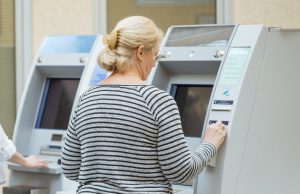Nearly 200,000 additional people in rural Spain will soon have in-person access to banking services, according to data from the Financial Inclusion Observatory consulted by Europa Press.
This observatory brings together the banking associations AEB, CECA and Unacc, which in October 2022 signed a protocol in which they undertook the commitment to provide in-person access to banking services in the 243 municipalities with more than 500 inhabitants that did not have such access as at 31 December 2021.
One year later, banks have already set up access points, which may be ATMs, ofibuses, branches, financial agents or post offices, in 158 of these municipalities, which are home to 138,757 people. To this figure we must add another 20 municipalities in which ATMs are currently being rolled out, bringing the number of beneficiaries to 155,829.
In addition, 39,957 people in another 49 municipalities will have a cash access point in the near future, thanks to processes already in place through bilateral contacts, agreements or public tenders.
The completion of these processes will enable coverage of 93% of the 243 municipalities identified in the protocol and 195,426 beneficiaries.
The municipal and regional elections held last May have sometimes meant a lengthening of the process due to the change of actors, which has led to delays in the deadline set in October 2022.
It should be recalled that at that time the banks undertook the commitment to ensure at least one in-person access point to banking services in all municipalities with more than 500 inhabitants within a period of six months and, if this was not achieved within that period, to install generic ATMs within the following six months.
On the other hand, industry sources have informed Europa Press that in talks with the Public Administrations they have been able to ascertain the specific realities of rural populations, such that in some of them there was no demand for an access point. Thus, 16 municipalities with 18,000 inhabitants have declined the offer of a public-private partnership for the installation of an access point.
In contrast, in other localities banks have taken advantage of the deployments made to cover municipalities of less than 500 inhabitants.
ASSISTANCE FOR THE ELDERLY
Regarding the follow-up of the measures agreed in February 2022 to improve customer service for the elderly, in the first half of 2023 the percentage of branches providing in-person teller service from 9 a.m. to 2 p.m. has increased to 82.2% (compared to 81% at the end of 2022).
In addition, 5.6 million elderly customers have benefited in the first half of the year from the measure of preferential treatment for this group in the event of high levels of public traffic in branches, while the telephone customer service hotline, at no additional cost and through a personal contact person, has received more than 2 million calls between January and June from customers over the age of 65, which means an average of more than two calls per person in this group.
Banking has continued to make progress in training employees to offer a service that is better adapted to the elderly, such that during the first six months of the year, the number of employees trained exceeded 36,800 and the number of hours of training amounted to 248,000.
More than 90% of the entities without a branch offer telephone customer service from 9 a.m. to 6 p.m., a ratio that is maintained with respect to the previous report, which analysed the data for 2022, while 90% of the sector has included improvements in its digital channels adapted to the needs of this group.
Some 94% of the total ATM network of credit institutions, compared to 91% by the end of 2022, has also included improvements to accommodate people over 65 years of age, which means that a total of 36,000 ATMs have been upgraded.
Lastly, the average time taken to resolve ATM incidents remains at one business day, which is an improvement on the commitment undertaken in the February 2022 ten-step action plan of two business days.
FINANCIAL AND DIGITAL TRAINING
Moreover, in the first quarter, more than 277,000 customers were trained in financial and digital literacy and fraud prevention, in line with the banking sector's commitment towards financial and digital education and customer service for the elderly, both in-person and through the other available channels.
In this regard, it is worth highlighting the 'Aula Financiera y Digital' (Financial and Digital Classroom) initiative created in May 2022 by AEB, CECA and Unacc. To date, this platform includes nearly 400 financial and digital training actions, 40 of which have been added in the last year, in addition to the multimedia content, videos and podcasts, on financial and digital education. Even so, 40% of the initiatives included in the platform are in-person, in response to the needs of groups such as the elderly and the disabled.













